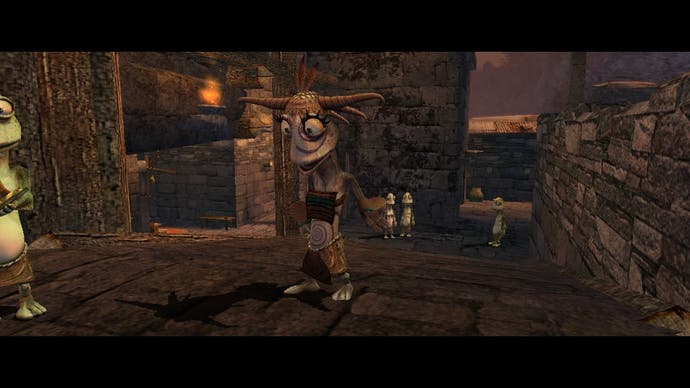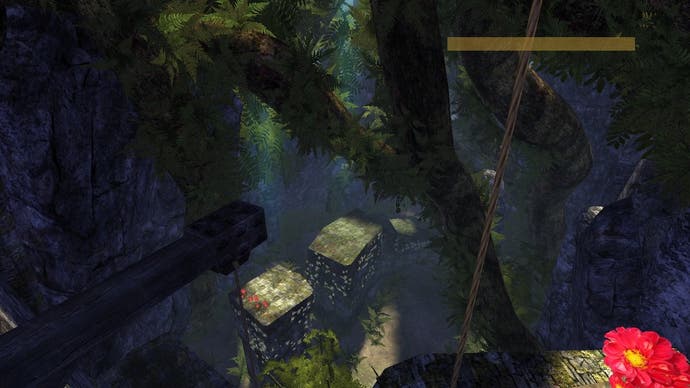Digital Foundry vs. HD Remasters
Splinter Cell and Stranger's Wrath feature in DF's look at the trend for bringing back classics.
Hailing from March 2005, Splinter Cell: Chaos Theory was something of a love letter to the specialist graphical capabilities of the original Xbox, and Ubisoft pushed the envelope in getting the most out of the console. The PC version could only benefit from this kind of care and attention and the result for PS3 owners is a game that manages to acquit itself fairly well six years after its initial release. It doesn't quite match the original PC game - there's no anti-aliasing and it looks like the HDR lighting is out, or significantly toned down - but at least the basic art assets work well when run in HD and the poly budgets are out of this world compared to the previous games. Update: 1080p is also supported in Chaos Theory, but bizarrely it is only activated if you specifically disable 720p on the PS3's XMB. A quick analysis of the output suggests that frame-rate takes a significant hit when this mode is engaged (the 30-35FPS average drops to 20FPS with sudden, occasional lurches back to 30) and 720p clearly provides the optimum gameplay experience.
Based on the Splinter Cell experience, it's clear that perhaps some games should be left in the past, but Chaos Theory is clearly a much better release: it has much in common with the God of War Collection in that gameplay and art quality just seem to work when transplanted across to the PlayStation 3 with little actual "remastering" being required.
Chaos Theory is definitely a cut above the other games in the remastered trilogy. For starters, it seems to have a much better, more consistent performance level overall than its predecessors - surprising bearing in mind that the engine is such a technological leap over the first two games. Either the game had a lot more care and attention put into it or perhaps elements of the existing PS3 version of Double Agent may have been useful. Alternatively, it may well have just been the case that the existing codebase was easier to work with.
The only blot on the copy book is that the 3D mode has some frame-rate and controller response issues (see a stereoscopic capture on YouTube 3D and remember to choose HD playback).
Regardless, while Chaos Theory is by far and away the best game in the re-released Splinter Cell trilogy, there's still a sense that it's not all it could have been. While the artwork is generally fine, there are plenty of low-poly elements and disappointing textures.
Unless you have the resources and budget of Microsoft and 343 Industries available and a franchise like Halo that will return a large investment, the chances are that the ability to create remastered HD artwork of a modern-day standard is going to be limited. It's all going to come down to how accomplished the original artwork is, and what legacy the game developers have left behind for the remastering teams. In this sense, Just Add Water is unusually blessed when it comes to their work with the Oddworld Trilogy, which kicks off with a Q4 release of a remastered Stranger's Wrath.
"We got the lot, we took delivery of a copy of the Perforce depot they used to create the game in the first place. So everything, every last scrap of code, asset, you name it, it's there," JAW's Stewart Gilray reveals.
The wealth of material available includes curve-based NURB models that the Oddworld Inhabitants' art team originally devised for the higher-detail cut-scene characters, along with every single piece of concept art originally created for all three games. It's from this completely comprehensive store of work that Just Add Water is able to do some proper remastering.




"The first thing we decided to do was update all the character models in the game - some 80 plus. In 50 per cent of the cases we had NURB-based versions of the models that were used in the cut-scenes, so we dropped those down to a level we could use in the game," Gilray adds.
"For those that we didn't have NURB models, we recreated them using the original Xbox models and the original concept art for reference. Oh yeah, we had all the original concept art too. Once we'd settled on that, we decided to completely overhaul the GUI using the original mock-ups we found in Perforce. Then we took to the environments. A lot of the textures in them were 64x64 up to 1024x1024, but things like the detail maps were 128x128, so we added new 512x512 ones, along with replacing all the foliage textures with at least double res ones.
"Once that was done we decided to go through the game and actually update environment meshes. For example, pipes were hexagonal, now they're pretty much round. Some might say we've done a lot more than just make it HD in the usual sense of the phrase."








